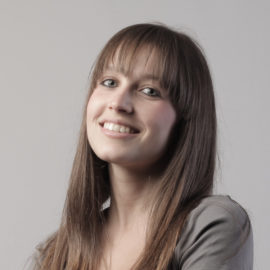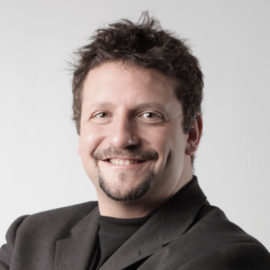Alan’s Story
During my professional journey, I’ve sometimes been asked to elaborate in more depth regarding my personal experiences and background as it pertains to the roles I take on, so I thought I would utilize this space to provide just that for whomever finds it useful.
First, it would be dishonest to say that Instructional Design was my first choice. However, unlike most who say this, I didn’t transition to it from teaching. Instead, having taken a Bachelors of Science in Psychology, I was preparing to pursue a doctorate degree studying the cognitive and neurological effects of video games on our brains. I’ve always had a fascination for how people learn: how their opinions form the way they do; perceptions and their limitations; how experiences influence the ways in which we process new information; and so on. This path, of course, would be highly research-centric with little opportunity to put these theories into practice. Thus, when I was fortunate in finding out about the Instructional Design master’s program during my last semester in college, and learning that I could indeed put theory into practice, I made the pivot to pursue ID.
Funnily enough, it took so long to receive the acceptance letter that I thought I didn’t get in, so I began work at Community Action Agency (CAA) to start my post-collegiate career. My decision to work at a nonprofit that helps the community was very intentional and targeted. To be candid, my earliest memories are of bouncing between different homeless shelters with my mother, and enduring racism and bullying while growing up. These experiences led me to have a vested interest in sociological concepts regarding class and race, and specifically, how I could potentially utilize my upward social mobility and career to help the disadvantaged and underprivileged populations that I myself once belonged to.
While at CAA for several months, I eventually received the acceptance letter for the ID master’s and had a talk with my supervisors about how I would have to leave to pursue this opportunity. In order to keep me on and continue serving CAA for a bit longer, I was fortunate that they offered to create a new 20-hour per week part-time position for my role. Additionally, and as another point of good fortune, I was able to secure a graduate assistantship in the university’s Center for Excellence in Teaching and Learning (CETL), thereby making my tuition covered while giving me direct Instructional Design experience during another 20 hours per week. Further, as a requirement for the program, I had to take on a 20-hour ID internship with a large insurance company. And, if that weren’t enough, I aspired to finish the program in one year instead of two by doubling a full-time master’s course load. You might glean from this that I had a particularly unhealthy relationship with sleep during that year, and you’d be correct. By the time it was all over, I had managed to pull off a perfect 4.0 GPA and received the College of Education’s Outstanding Student Award.
A semester prior to graduating, I was again fortunate to have been sought out for my first ID role at a medical device manufacturing company. I moved for the position to Chicago IL, though I had to drive from Chicago to Cincinnati and back once per week to finish courses in Cincinnati. You’d be surprised how well one can acclimate to a 6-hour drive twice per week. There, I truly was thrown to the wolves in “sink or swim” fashion; I went from managing one to two projects at a time during my internship/assistantship, to having to manage 10+ at a time with multiple SMEs (of high-complexity subject matter involving image-guided surgery and radiotherapy devices) and stakeholders per project and all. I really was able to put the ADDIE model of Instructional Design development to use, and I grew to enjoy the organized chaos in a way. This wouldn’t last long, however, as the company had a poor fiscal year that led to our Corporate Education director meeting with us weekly to essentially say, “They haven’t cut our department yet so you still have your jobs, but we will keep you posted.” The writing was on the wall, so I went back to the job market and interviewed with several companies – including SpaceX – but, as I was feeling a bit homesick, accepted an equivalent offer at a software engineering company back in Cincinnati, Cincom.
Cincom did things a little differently. Being a software company, they used Agile – an iterative design process that places SMEs as a more involved part of the development cycle – instead of ADDIE. This was a crucial change that gave me my first of many career epiphanies. As an example, in my role prior to Cincom, I would create SOPs to address the issue of SMEs taking too long to send me requested content. This made sense on paper. However, in retrospect, I’m sure it made it look like I was being too rigid and giving SMEs even more work on their already-full plate. After utilizing Agile at Cincom, I now recognize my prior approach as a mistake. With Agile, I was able to meet with SMEs and product owners far more often during our iterative review process, and this created an organic relationship with them, such that SOPs were unnecessary; if I asked for content, this time they sometimes over-delivered, presumably because they were more invested in the project and felt like it was theirs too.
Beyond my growth in project processes and e-learning or job aid development, Cincom also had me involved in research and other high-level work: selecting new Learning Management System and other technology vendors, integrating a dynamic self-help system into a SaaS product, and lots of interdepartmental Instructional Design consulting relating to tools and technology, human resources, and more. I was lucky to have been involved in much more than what one would expect of my job title, as the experience was invaluable. On the other hand, I was also a bit unlucky that my position ended up being eliminated after two-and-a-half years and I was laid off.
Between my experience in Chicago of almost being laid off and my experience at Cincom of having been – as well as conversations with many friends and peers in the industry – it became apparent that Instructional Design positions may be going through a bit of turmoil currently. It has always been difficult to justify our ROI to leadership when cuts are being made, and perhaps we’re now experiencing a shift where companies would rather hire contractors for temporary work as needed than a FTE. In any case, I sought to adapt to a changing environment by creating what you see here: Doctrina Solutions, where my experience as a Learning Experience/Instructional Designer has increased exponentially as a result of having the good fortune of working with various teams from various companies, often simultaneously.
If you’ve read this far, you’ll notice that I have a tendency to point out “luck” and “fortunate” circumstances often. My language is intentional. Studies show language informs thought, so I find it to be personal best practice to acknowledge the times when it was luck – having X experiences, meeting Y people, etc. – that helped bring me where I am now. The hidden danger of thinking, “I worked my butt off to get to where I am, it was all me” is that the inverse of that thought is “others who aren’t where I am must not have worked as hard as me,” which is a mindset that has a slippery slope towards eroding compassion and empathy. As comedian Tim Minchin once eloquently put it, “Understanding that you can’t truly take credit for your successes, nor truly blame others for their failures will humble you and make you more compassionate. Empathy is intuitive, but is also something you can work on intellectually.”
The above concept is an excerpt originating from my time giving college lectures for a “Managing Diversity” course, and in corporate Diversity and Inclusion committee sessions (in companies that had such committees). I mentioned earlier that I wanted to find a way to use my career to help disadvantaged populations, sharing such perspectives is small part of it. My hope, moving forward, is that I’m able to connect with more opportunities to positively impact the world around me.
Thank you for your time, patience, and effort to learn a bit more about me.













